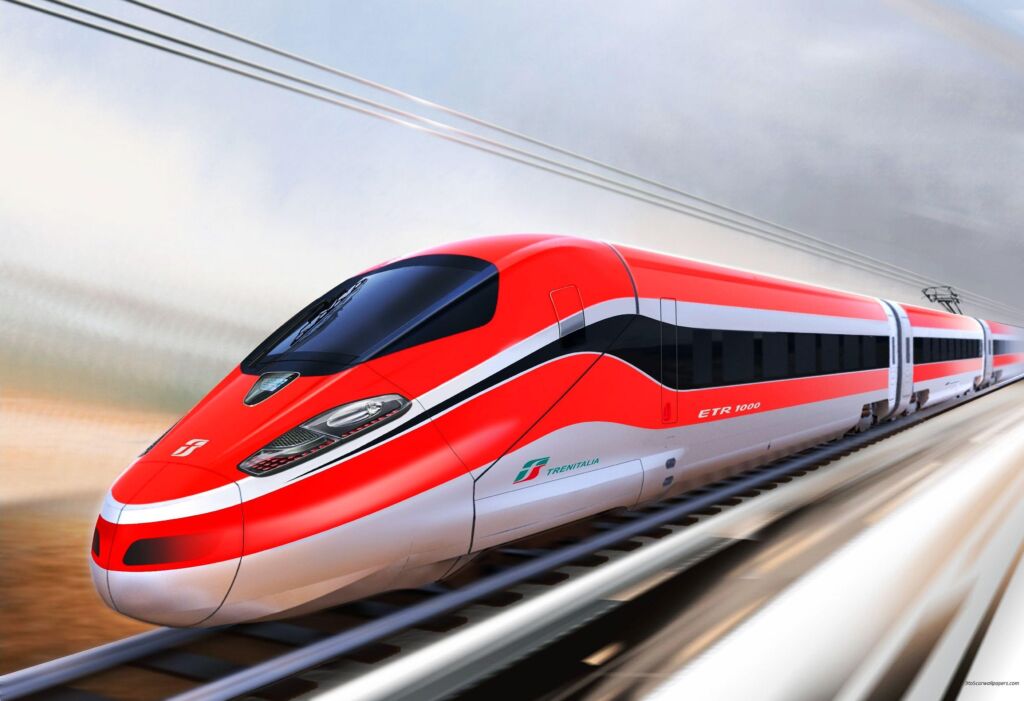High-speed trains are revolutionizing travel around the world, offering a swift and efficient alternative to traditional rail and road transport. However, beyond the obvious benefits of speed and convenience, high-speed trains also present significant environmental advantages. In this blog post, we’ll delve into the environmental impact of high speed trains and explore how they contribute to a more sustainable future.
Reduced Greenhouse Gas Emissions
One of the most significant environmental benefits of high-speed trains is their ability to reduce greenhouse gas emissions. Traditional transportation methods, such as cars and airplanes, are major contributors to carbon dioxide (CO2) emissions. High-speed trains, on the other hand, are often powered by electricity, which can be sourced from renewable energy. Even when powered by conventional electricity, high-speed trains produce far less CO2 per passenger kilometer compared to cars and planes.
Energy Efficiency
High-speed trains are designed for efficiency. Their streamlined shapes and advanced engineering minimize air resistance, allowing them to travel at high speeds with less energy consumption. In addition, regenerative braking systems, which capture and reuse energy during braking, further enhance their energy efficiency. This contrasts sharply with the energy demands of air travel and the internal combustion engines of cars.
Reduction in Road Congestion
The expansion of high-speed rail networks can significantly reduce road congestion. With more people opting for high-speed rail, there are fewer cars on the road, leading to reduced traffic jams and lower emissions from idling vehicles. This also means less wear and tear on road infrastructure, which can be both environmentally and economically beneficial.
Land Use and Urban Sprawl
High-speed trains encourage the development of more compact and efficient land use patterns. By connecting major cities and regions with rapid transit options, high-speed rail can help to curb urban sprawl. This can lead to more sustainable city planning and reduced pressure on greenfield sites, preserving natural habitats and agricultural land.
Noise Pollution
While high-speed trains do produce noise, modern engineering has significantly mitigated this issue. Noise barriers and advanced track designs help to reduce the impact on surrounding communities. Compared to the constant hum of highway traffic or the roar of jet engines, the noise pollution from high-speed trains is relatively minimal and more localized.
Challenges and Considerations
Despite these benefits, it’s essential to acknowledge the challenges associated with high-speed rail development. The construction of new high-speed rail lines can have significant environmental impacts, including habitat disruption and land use changes. It’s crucial to conduct thorough environmental assessments and implement mitigation strategies during the planning and construction phases.
Additionally, the energy source for high-speed trains plays a critical role in determining their overall environmental impact. If the electricity used is generated from fossil fuels, the benefits can be diminished. Therefore, investing in renewable energy sources is vital for maximizing the environmental advantages of high-speed rail.
Conclusion
High-speed trains represent a promising step towards more sustainable transportation. By reducing greenhouse gas emissions, improving energy efficiency, alleviating road congestion, and promoting better land use, high-speed trains can play a pivotal role in mitigating the environmental impact of our travel needs. As we continue to develop and expand high-speed rail networks, it’s crucial to address the associated challenges and ensure that these systems are integrated into a broader strategy for sustainable development. The future of transportation is fast, efficient, and green, and high-speed trains are at the forefront of this exciting journey.




